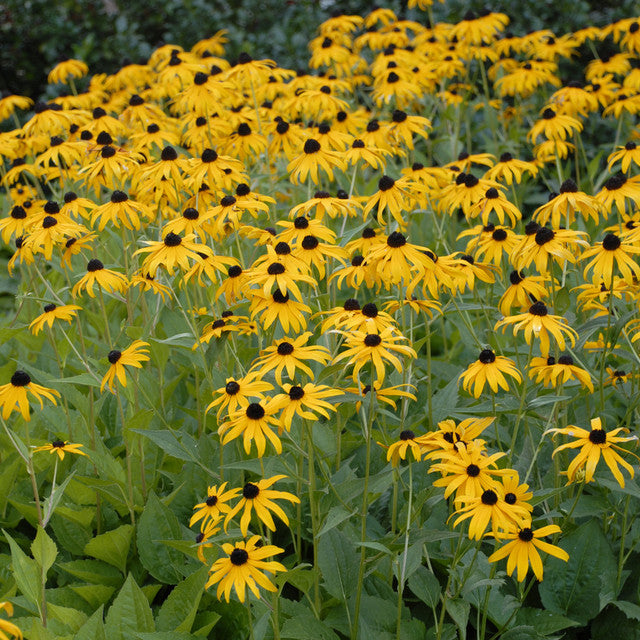
Black Eyed Susan
Rudbeckia hirta, also known as Black-eyed Susan, is a classic and beloved wildflower in North America, offering bright, cheerful flowers and robust performance in the garden. Black-eyed Susan is a cheerful perennial that is often grown as a biennial or short-lived perennial plant. The plant’s large daisy-like flowers feature golden-yellow petals surrounding a dark brown to black cone center, creating a striking contrast that catches the eye. The blooms open from mid-summer and continue to early fall, and Black-eyed Susan often has the ability to re-bloom with deadheading or when temperatures cool.
Is Black Eyed Susan a native plant?
Native wildflowers are a gardener's best friend! A great place to start with native gardening is one of our favorite North American natives, Black-eyed Susan. These cheerful, bright gold flowers with their dark centers are one of our favorite perennials (many gardeners grow them as a biennial or a short-lived perennial).
Blooming from mid-summer into early fall, Black-eyed Susan is a very long-season flower that is bold and brilliant in the garden. This hardy plant is very easy to grow and will thrive in full sun in sandy or clay soils with average moisture. It is very heat and drought tolerant. In fact, as the weather starts to dry out and turn hot in late summer, this is one of the few flowers that will keep right on blooming while other flowers have stopped.
Black-eyed Susans are very attractive to pollinators as well as other wildlife.
Hummingbirds, bees, butterflies, and other beneficial insects are all attracted to its nectar and pollen. Many birds, especially seed-eating finches and sparrows, eat the seeds in fall and winter when other food is scarce. Deer also tend to leave these plants alone, so Black-eyed Susans can do very well in areas with high deer pressure.
There are many good companion plants for Black-eyed Susan. It works well in any mixed perennial or wildflower border, but it's also beautiful with other summer and fall bloomers like purple coneflower, blazing star, bee balm, or ornamental grasses. Plant several together for a real show-stopper or tuck a few here and there in the landscape for a natural look. Black-eyed Susans also work very well in mass plantings where their sunny color can really show off. They are also great for cutting, and even a small grouping in the garden will make a statement. Let some seed heads stand in the fall to provide a food source for birds, and cut back old stems in late winter or early spring before new growth starts.
In summary, Black-eyed Susan has a winning combination of long season bloom, toughness, and wildlife value. Deer- and drought-resistant, this plant is one of the easiest natives for gardeners of any experience level to grow and enjoy.






